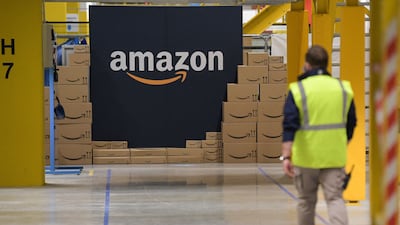Amazon is to cut about 14,000 corporate roles as it reorganises its workforce to streamline operations and accelerate investment in artificial intelligence, according to an internal memo published on Tuesday.
The move follows several rounds of layoffs over the past two years and represents Amazon’s largest restructuring since it eliminated about 27,000 roles in 2023.
The decision is about “reducing layers, increasing ownership and helping reduce bureaucracy”, said Beth Galetti, Amazon’s senior vice president for people experience and technology.
“This generation of AI is the most transformative technology we’ve seen since the internet,” Ms Galetti wrote in a memo to the staff.
Amazon’s restructuring is aimed at helping the company innovate more quickly as AI transforms its operations, she said. “It’s enabling companies to innovate much faster than ever before,” she added.
To adapt, Amazon plans to simplify its structure and empower teams to make decisions more efficiently. “We’re convicted that we need to be organised more leanly, with fewer layers and more ownership, to move as quickly as possible for our customers and business,” Ms Galetti said.
The company said that affected employees will have 90 days to apply for internal roles, along with severance packages, outplacement services and extended health benefits.
Amazon employs more than 1.5 million people globally, including tens of thousands in corporate roles, according to the company and Reuters data.
Chief executive Andy Jassy has described AI as a key driver of change across Amazon’s divisions, and told employees in a June 2024 memo that AI will probably “reduce our total corporate workforce as we get efficiency gains from using AI extensively across the company”, according to a Reuters report.
The layoffs reflect a trend among global technology companies rebalancing their workforces as AI transforms corporate operations.
Over the past year, companies such as Google, Microsoft and IBM have each announced measures to reduce administrative and support roles while expanding teams focused on AI and automation.
Watch: Microsoft turns 50. It now looks forward to the AI age
Google cut hundreds of advertising and recruitment jobs in early 2024 to shift resources towards AI-driven products, while Microsoft restructured its gaming and mixed-reality divisions to prioritise development of its Copilot platform.
IBM chief executive Arvind Krishna said last year that the company expects AI to replace nearly 7,800 back-office positions in the coming years as automation improves efficiency.
The World Economic Forum’s 2025 Future of Jobs Report found that AI and automation continue to reshape global employment patterns, with clerical, administrative and data-entry roles among the most affected as businesses automate routine tasks and redirect investment towards AI-driven operations.
The report said that 40 per cent of employers expect to reduce their workforce where AI can automate tasks, even as 11 million new jobs are projected to be created by AI and data-processing technologies over the next five years.
Overall, the WEF estimates that 92 million jobs could be displaced globally by 2030, while about 170 million new positions may emerge, resulting in a net gain of 78 million jobs as technology drives demand for new skills.
Research by investment bank Goldman Sachs published last year projected that AI automation could affect up to 300 million full-time jobs, although it noted that new technologies historically create categories of employment over time.
Amazon’s decision also underscores the challenge of balancing AI-driven productivity with employment stability. While the company plans to continue hiring in strategic growth areas such as AI, cloud computing and logistics, it said the restructuring will help streamline operations and enable faster innovation across its businesses.


